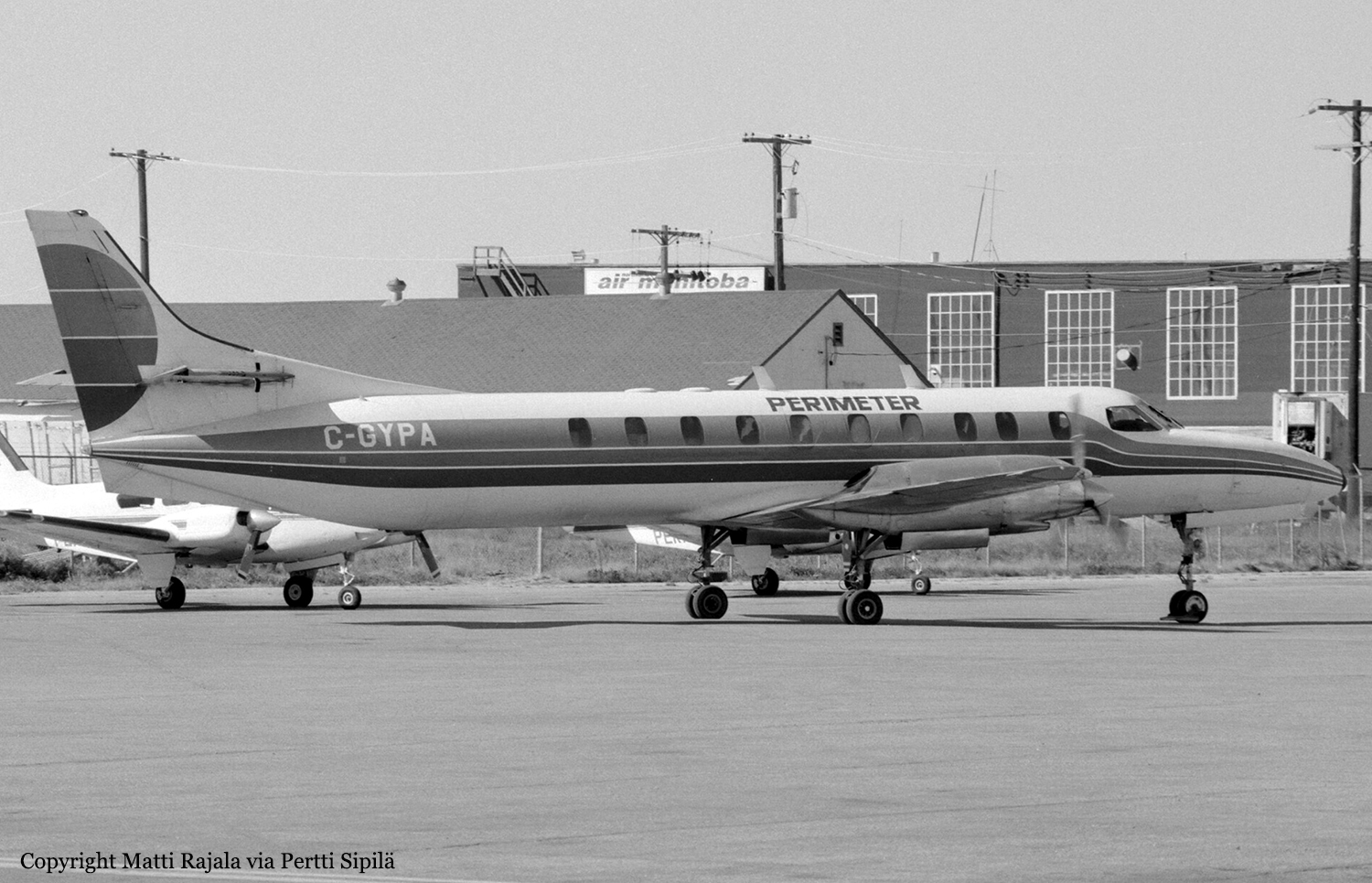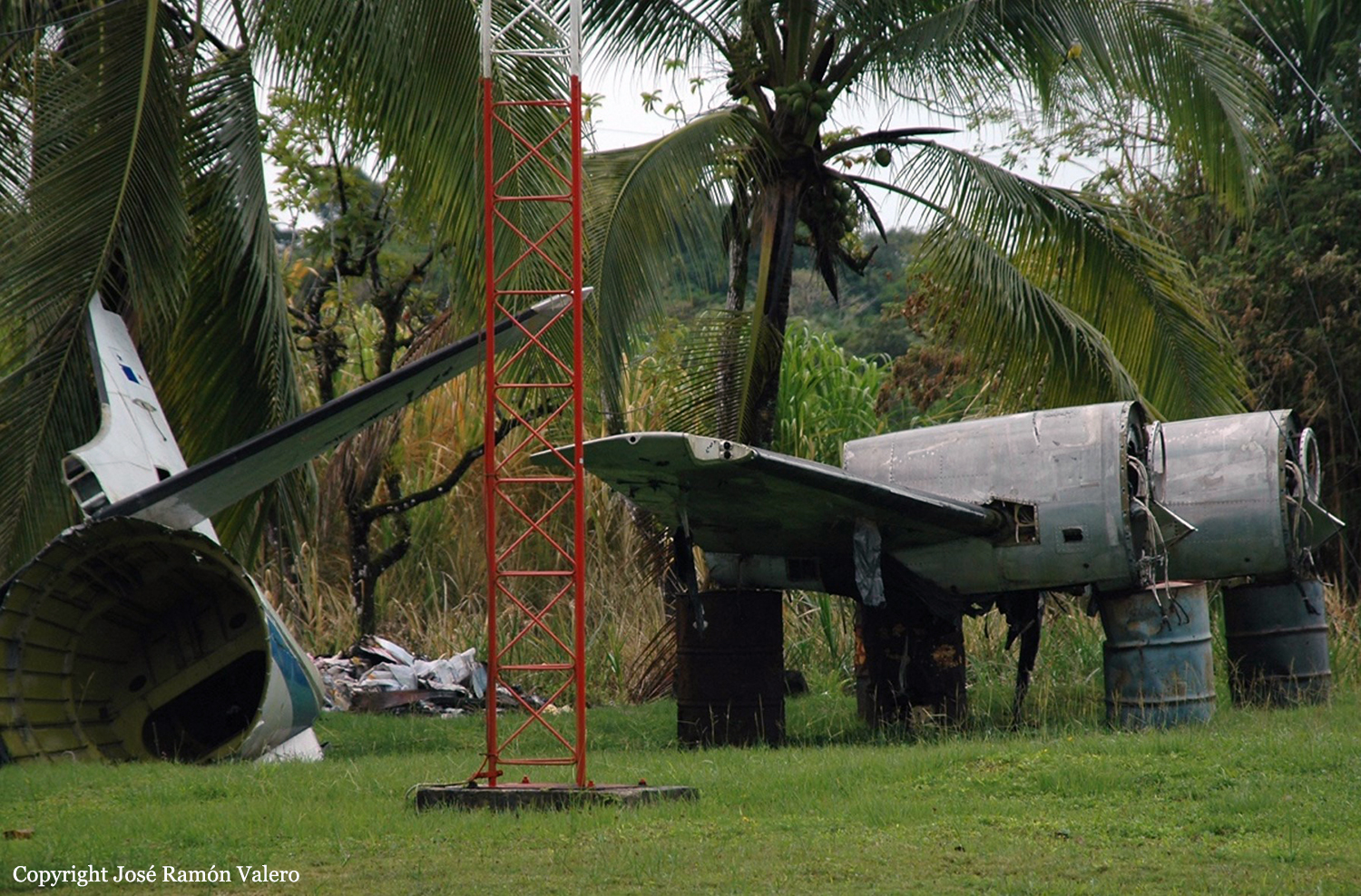Country
Crash of a Swearingen SA226TC Metro II in Bahía Blanca
Date & Time:
Nov 27, 2001 at 0538 LT
Registration:
LV-WSD
Survivors:
Yes
Schedule:
Buenos Aires – Bahía Blanca
MSN:
TC-237E
YOM:
1977
Crew on board:
2
Crew fatalities:
Pax on board:
1
Pax fatalities:
Other fatalities:
Total fatalities:
0
Captain / Total hours on type:
929.00
Copilot / Total hours on type:
40
Circumstances:
Following an uneventful flight from Buenos Aires-Ezeiza-Ministro Pistarini Airport, the crew started a night approach to Bahía Blanca-Comandante Espora Airport. The approach and landing on runway 34R were considered as normal. After touchdown, the crew started the braking procedure and the aircraft rolled for a distance of 1,200 metres when it started to deviate to the right. It veered off runway, rolled for 150 metres then lost its nose gear and came to a halt. All three occupants escaped uninjured while the aircraft was damaged beyond repair.
Probable cause:
The aircraft veered off runway after landing due to the possible combination of the following factors:
- A possible (but not confirmed) failure or malfunction of the left engine reverse thrust system,
- Crosswind close to the maximums specified in the flight manual,
- Lack of corrective actions on part of the crew who failed to identify a possible failure,
- Inappropriate use of the nosewheel steering system.
- A possible (but not confirmed) failure or malfunction of the left engine reverse thrust system,
- Crosswind close to the maximums specified in the flight manual,
- Lack of corrective actions on part of the crew who failed to identify a possible failure,
- Inappropriate use of the nosewheel steering system.
Final Report:
Crash of a Swearingen SA226TC Metro II in Shamattawa: 2 killed
Date & Time:
Oct 11, 2001 at 2333 LT
Registration:
C-GYPA
Survivors:
Yes
Schedule:
Gods Lake Narrows – Shamattawa
MSN:
TC-250
YOM:
1978
Flight number:
PAG962
Crew on board:
2
Crew fatalities:
Pax on board:
1
Pax fatalities:
Other fatalities:
Total fatalities:
2
Captain / Total hours on type:
1100.00
Copilot / Total hours on type:
900
Circumstances:
Perimeter Airlines Flight PAG962, a Fairchild SA226TC (Metroliner), with two pilots and a flight nurse on board, departed Gods Lake Narrows, Manitoba, at approximately 2300 central daylight time, on a MEDEVAC flight to Shamattawa. Approaching Shamattawa, the crew began a descent to the 100 nautical mile minimum safe altitude of 2300 feet above sea level (asl) and, when clear of an overcast cloud layer at about 3000 feet asl, attempted a night, visual approach to Runway 01. The aircraft was too high and too fast on final approach and the crew elected to carry out a missed approach. Approximately 30 seconds after the power was increased, at 2333, the aircraft flew into trees slightly to the left of the runway centreline and about 2600 feet from the departure end of Runway 01. The aircraft was equipped with a cockpit voice recorder (CVR) that indicated the crew were in control of the aircraft; they did not express any concern prior to impact. The aircraft broke apart along a wreckage trail of about 850 feet. Only the cabin aft of the cockpit retained some structural integrity. The captain and first officer were fatally injured on impact. The flight nurse was seriously injured but was able to exit the wreckage of the cabin. A post-crash fire was confined to the wings which had separated from the cabin and cockpit wreckage.
Probable cause:
Findings as to Causes and Contributing Factors:
1. The aircraft was flown into terrain during an overshoot because the required climb angle was not set and maintained to ensure a positive rate of climb.
2. During the go-around, conditions were present for somatogravic illusion, which most likely led to the captain losing situational awareness.
3. The first officer did not monitor the aircraft instruments during a critical stage of flight; it is possible that he was affected by somatogravic illusion and/or distracted by the non-directional
beacon to the extent that he lost situational awareness.
Other Findings:
1. The absence of approach aids likely decreased the crew=s ability to fly an approach from which a landing could be executed safely.
2. The company standard operating procedures (SOPs) did not define how positive rate is to be determined.
1. The aircraft was flown into terrain during an overshoot because the required climb angle was not set and maintained to ensure a positive rate of climb.
2. During the go-around, conditions were present for somatogravic illusion, which most likely led to the captain losing situational awareness.
3. The first officer did not monitor the aircraft instruments during a critical stage of flight; it is possible that he was affected by somatogravic illusion and/or distracted by the non-directional
beacon to the extent that he lost situational awareness.
Other Findings:
1. The absence of approach aids likely decreased the crew=s ability to fly an approach from which a landing could be executed safely.
2. The company standard operating procedures (SOPs) did not define how positive rate is to be determined.
Final Report:

Crash of a Swearingen SA226TC Metro II in Fort Wayne: 1 killed
Date & Time:
Nov 9, 2000 at 0123 LT
Registration:
N731AC
Survivors:
No
Schedule:
Fort Wayne – Milwaukee
MSN:
TC-255
YOM:
1978
Crew on board:
1
Crew fatalities:
Pax on board:
0
Pax fatalities:
Other fatalities:
Total fatalities:
1
Captain / Total hours on type:
75.00
Aircraft flight hours:
20885
Circumstances:
The airplane was destroyed on impact with trees and terrain after takeoff. A post-impact fire ensued. A courier stated that he put 14 cases and 5 bags into the airplane and that "everything took place as it normally does." A witness stated, "I heard a very low flying aircraft come directly over my house. ... It sounded very revved up like a chainsaw cutting through a tree at high speed." The accident airplane's radar returns, as depicted on a chart, exhibited a horseshoe shaped flight path. That chart showed that the airplane made a left climbing turn to a maximum altitude of 2,479 feet. That chart showed the airplane in a descending left turn after that maximum recorded altitude was attained. The operator reported the pilot had flown about 75 hours in the same make and model airplane and had flown about 190 hours in the last 90 days. The weather was: Wind 090 degrees at 7 knots; visibility 1 statute mile; present weather light rain, mist; sky condition overcast 200 feet; temperature 9 degrees C; dew point 9 degrees C. No pre-impact engine anomalies were found. NTSB's Materials Laboratory Division examined the annunciator panel and recovered light assemblies and stated, "Item '29' was a light assembly with an identification cover indicating that it was the '[Right-hand] AC BUS' light. Examination of the filaments in the two installed bulbs revealed that one had been stretched, deformed and fractured and the other had been stretched and deformed." The airplane manufacturer stated that the airplane's left-hand and right-hand attitude gyros are powered by the 115-volt alternating current essential bus. Two inverters are installed and one inverter is used at a time as selected by the inverter select switch. The inverter select switch is located on the right hand switch panel. The airplane was not equipped with a backup attitude gyro and was not required to be equipped with one. The airplane was certified with a minimum flight crew of one pilot. Subsequent to the accident, the operator transitioned "from the single pilot operation of our Fairchild Metroliner to the inclusion of a First Officer."
Probable cause:
The indicated failure of the right hand AC bus during takeoff with low ceiling. The factors were the low ceiling, night, and the excessive workload the pilot experienced on takeoff with an electrical failure without a second in command.
Final Report:
Crash of a Swearingen SA226TC Metro II in Bocas del Toro
Date & Time:
May 10, 2000 at 1009 LT
Registration:
HP-1364MAM
Survivors:
Yes
MSN:
TC-324
YOM:
1980
Crew on board:
2
Crew fatalities:
Pax on board:
6
Pax fatalities:
Other fatalities:
Total fatalities:
0
Circumstances:
Upon landing at Bocas del Toro, in unclear circumstances, the aircraft went out of control and veered off runway. It lost its undercarriage and came to rest in a sugarcane field. All eight occupants escaped uninjured while the aircraft was damaged beyond repair.



